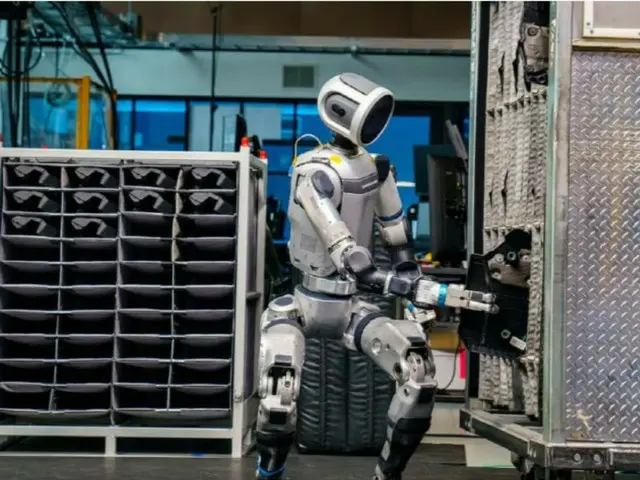Amid this attention, there are expectations for synergy effects with existing manufacturing facilities, and a full-scale restructuring of the industrial landscape is underway. According to the industry, Hyundai Motor, Tesla, and China's Xiaoping are
Xpeng and other automakers have announced plans to develop and mass-produce humanoid robots. Some companies have already deployed robots in their factories for testing, exploring the possibility of commercialization.
Hyundai Motors has announced that its group robot manufacturer, Boston Dynamics, has developed the highly maneuverable humanoid robot "Atlas," which can walk, run and perform multiple movements like a human.
The company is promoting the commercialization of its Atlas robot. It will invest an additional $5 billion (approximately 770 billion yen) to produce the robot in the United States, and will begin testing the Atlas robot at a new factory in Georgia at the end of this year.
Hyundai Motor Group Chairman Chung Eui-sung said, "The future of manufacturing depends on cooperation between humans and machines. We will generate 20% of the group's sales in the robotics field in the future."
" Tesla will unveil the third generation model of its humanoid robot "Optimus" next year.
The company plans to develop and mass-produce the robots. CEO Elon Musk said in a recent performance announcement that "humanoid robots are a business that can generate infinite profits," and that the company aims to produce 100 million robots in the long term.
Xiaopan unveiled Iron, a humanoid robot equipped with its own AI chip, this month and plans to begin mass production by the end of next year.
BYD announced that it will launch the domestic humanoid robot "BoYoboD" next month and plans to expand production to 20,000 units by next year.
BMW is experimenting with deploying a humanoid robot called "Figure 02" at its Spartanburg plant in the US to assist with production, and Mercedes-Benz is also using it in assembly processes.
In addition, Toyota, Audi, and Honda are also rapidly advancing the development of robots.
The reason why automakers are putting effort into developing robots is because
This is because the technology and large-scale parts supply chains that have been accumulated in the process of producing automobiles can be utilized as they are. By utilizing the existing production lines and supply chains, it is possible to build new infrastructure.
It is possible to mass-produce robots without building new ones, which will significantly reduce costs. In addition, the control and sensor technologies secured through the development of electric vehicles and self-driving cars will be applied to humanoid robots.
There are many overlapping components with robots. The control principles of robotic arms, which are widely used in automobile manufacturing processes, are similar to those of humanoid robots, making the technology highly expandable.
Furthermore, humanoid robots resemble humans in shape, so they can be deployed to factories without making major changes to existing factory equipment.
It is expected that this will increase productivity, reduce labor costs in the long term, and generate revenue through the sale of robots. However, many in the industry believe that it will take more time before it can be fully commercialized.
This is because major technical challenges remain, such as the precision of joint control and energy efficiency, and the cost structure for mass production has not yet been fully established.
IDTechEx, a British market research firm, said, "Humanoid robots are expected to be fully deployed for complex tasks from around 2033," and "price
If the price falls to around $20,000 (approximately 3.08 million yen) and logistics and transportation work becomes possible, the market will grow rapidly, reaching a scale of $30 billion (approximately 4.6 trillion yen) by 2035."
are.
2025/11/11 07:09 KST
Copyrights(C) Edaily wowkorea.jp 107

